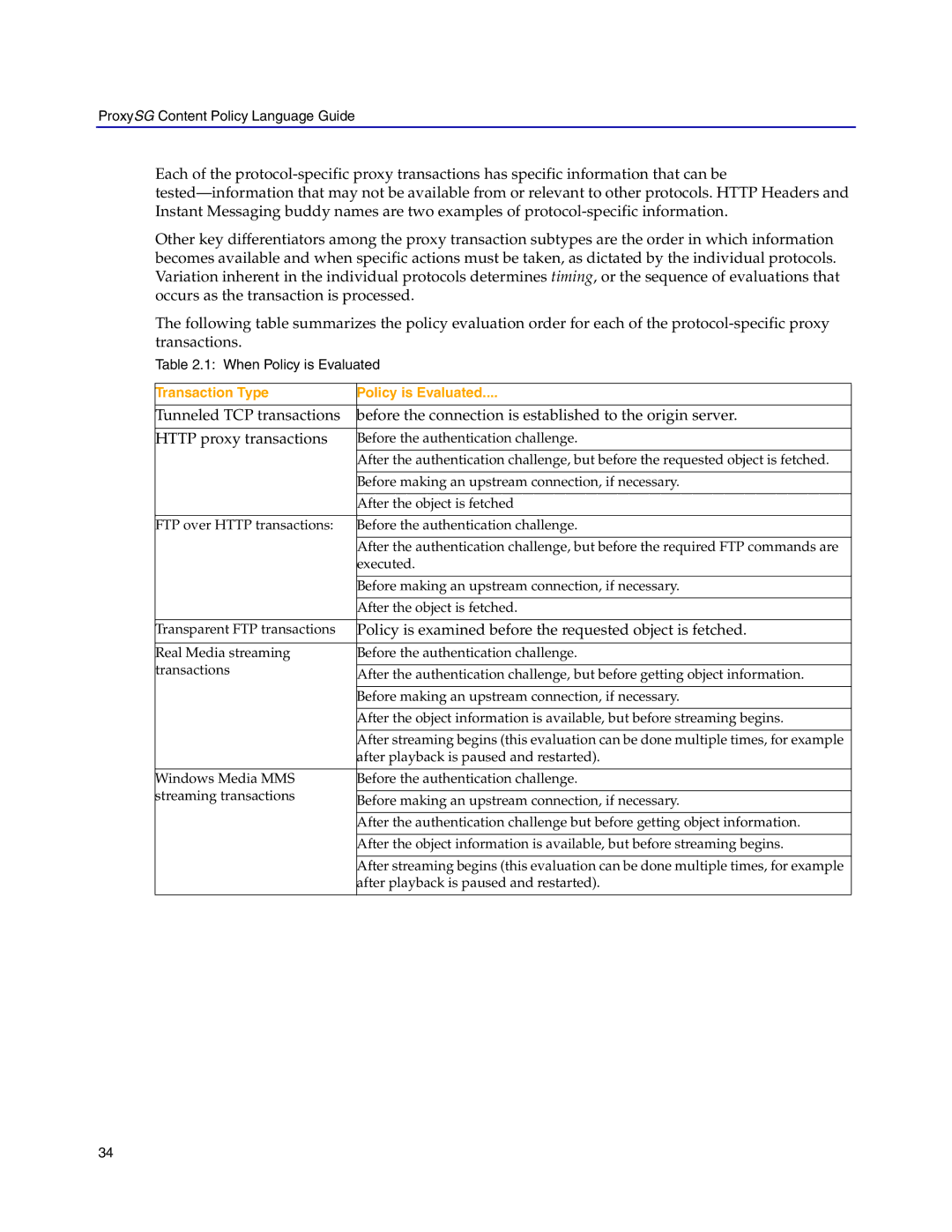ProxySG Content Policy Language Guide
Each of the
Other key differentiators among the proxy transaction subtypes are the order in which information becomes available and when specific actions must be taken, as dictated by the individual protocols. Variation inherent in the individual protocols determines timing, or the sequence of evaluations that occurs as the transaction is processed.
The following table summarizes the policy evaluation order for each of the
Table 2.1: When Policy is Evaluated
Transaction Type | Policy is Evaluated.... | |
|
| |
Tunneled TCP transactions | before the connection is established to the origin server. | |
|
| |
HTTP proxy transactions | Before the authentication challenge. | |
|
| |
| After the authentication challenge, but before the requested object is fetched. | |
|
| |
| Before making an upstream connection, if necessary. | |
|
| |
| After the object is fetched | |
|
| |
FTP over HTTP transactions: | Before the authentication challenge. | |
|
| |
| After the authentication challenge, but before the required FTP commands are | |
| executed. | |
|
| |
| Before making an upstream connection, if necessary. | |
|
| |
| After the object is fetched. | |
|
| |
Transparent FTP transactions | Policy is examined before the requested object is fetched. | |
|
| |
Real Media streaming | Before the authentication challenge. | |
transactions |
| |
After the authentication challenge, but before getting object information. | ||
| ||
|
| |
| Before making an upstream connection, if necessary. | |
|
| |
| After the object information is available, but before streaming begins. | |
|
| |
| After streaming begins (this evaluation can be done multiple times, for example | |
| after playback is paused and restarted). | |
|
| |
Windows Media MMS | Before the authentication challenge. | |
streaming transactions |
| |
Before making an upstream connection, if necessary. | ||
| ||
|
| |
| After the authentication challenge but before getting object information. | |
|
| |
| After the object information is available, but before streaming begins. | |
|
| |
| After streaming begins (this evaluation can be done multiple times, for example | |
| after playback is paused and restarted). | |
|
|
34
